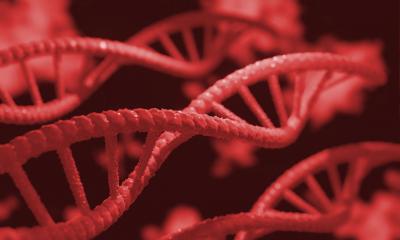International Cancer Genome Project starts in Germany
Brain tumors are the primary cause of cancer mortality in children. Even if a cure is possible, young patients often suffer tremendously from the stressful treatment which can be harmful to the developing brain. Therefore, there is an urgent need for target-oriented, gentle treatment methods. The most important childhood brain tumors are medulloblastoma, which is diagnosed in approximately one hundred young patients each year in Germany, and pylocytic astrocytoma, which is diagnosed in about 200 children each year.
"Regarding these two conditions, in particular, we have done good preliminary work and have already compiled comprehensive tumor sample collections," explains Professor Peter Lichter, coordinator of the German ICGC network.
The German ICGC research network will analyze 300 tumor samples of each cancer type. In addition, researchers will analyze the same number of healthy samples obtained from the same patients so as to be able to identify cancer-specific changes. In the more common adult cancers, ICGC regulations even require the investigation of 500 samples of each type of cancer.
The decisive factor for the start of the International Cancer Genome Consortium were U.S. studies of colorectal cancer and breast cancer which showed that in each individual tumor considerably more mutations are crucial for carcinogenesis than scientists had previously assumed. Furthermore, individual tumors of one and the same type of cancer have substantially different mutation profiles. This may lead to totally new treatment approaches in each individual case; in some cases, a cocktail of several targeted drugs might also improve the chances of cure.
Distributed Tasks: Collecting, Sequencing, Analyzing
The various tasks of the German ICGC network are headed by internationally acclaimed experts. The common goal is a very comprehensive molecular analysis of the tumors. Thus, besides targets for new therapies, scientists are also trying to identify biomarkers which facilitate earlier and more precise diagnosis. In addition, researchers expect to find molecular indicators of the effectiveness of particular treatments and expected side effects. "Especially in children, we urgently need to avoid treatments that are not successful, because they suffer particularly from the dangerous late effects of radiotherapy and chemotherapy," says pediatrician and molecular biologist Stefan Pfister, who is one of the project leaders.
Using different methods, researchers are now capturing the sequence of DNA building blocks in the nuclei of the cells. The sequence of DNA segments containing the blueprints for proteins is analyzed separately. In another subproject, researchers study which DNA regions are silenced by chemical labels called epigenetic mutations. Yet another research group studies the small RNA molecules which regulate the activity of individual genes.
"Parts of the sequencing work will be commissioned to specialized companies. In a pilot phase, we have already tested this with GATC Biotech AG in Constance," Peter Lichter explains. "Rapid technological progress causes prices for DNA sequencing to fall continuously. Therefore, we always contract out for only six months so that we can reduce the costs for the whole project."
Scientists from five leading research institutes in Heidelberg are taking part in the ambitious project: From the German Cancer Research Center (Deutsches Krebsforschungszentrum, DKFZ), the National Center for Tumor Diseases (NCT), Heidelberg University and the University Hospitals and the European Molecular Biology Laboratory (EMBL). In addition, scientists from Düsseldorf University Hospitals and the Max Planck Institute for Molecular Genetics in Berlin have taken on tasks within the network project.
Data Management in the Cancer Genome Project: Not an Easy Task
An extraordinary challenge is the analysis and storage of the gigantic mass of data that are produced in the course of the International Cancer Genome Project. The genome of a cell is composed of about three billion building blocks, which are captured up to 30 times in the various analyses in order to verify results. All data of the German ICGC projects will be joined together by Professor Roland Eils, the network's deputy coordinator. To this end, Eils, who heads the Theoretical Bioinformatics Division of DKFZ, is building one of the world's largest data storage units for life sciences at the BioQuant Center of Heidelberg University. Funds of several million euros are provided for this by the Federal Government and the State of Baden-Württemberg. This facility will have a storage capacity of several petabytes - a petabyte is equal to one million gigabytes - a one with fifteen zeroes after it!
Network coordinator Peter Lichter is convinced that the effort is worth it: "Our own preliminary work and the excellent networking of clinical practice and research here in Heidelberg let us expect rapid results, particularly for brain tumors in children, which might bring fundamental improvements to the treatment of the little patients."
Source: Helmholtz Association of German Research Centres
11.12.2009











